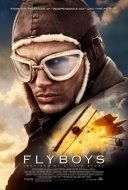 The film "Flyboys," which opens nationwide today, has already generated some online discussions about its African American character (named Eugene Skinner and played by Abdul Salis). The discussions will often begin with a remark about how lame, PC, or just plain inaccurate it is to include a black guy in a movie about American combat pilots in WWI. Others will join in with remarks abo
The film "Flyboys," which opens nationwide today, has already generated some online discussions about its African American character (named Eugene Skinner and played by Abdul Salis). The discussions will often begin with a remark about how lame, PC, or just plain inaccurate it is to include a black guy in a movie about American combat pilots in WWI. Others will join in with remarks abo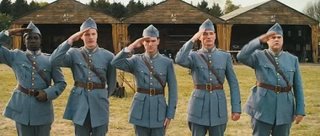 ut how the film takes too many historical liberties by including such a character.
ut how the film takes too many historical liberties by including such a character.
Eventually someone will join the discussion to point out that there really was such a person: EUGENE BULLARD. Although Bullard is a national hero in France, he is still a relative unknown in his native United States. Perhaps "Flyboys" will help to change that.
Craig Lloyd, author of the definitive Bullard biography, says, "from what I've seen, the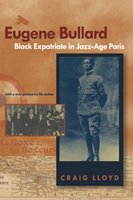 y're trying to give Bullard his due in this movie. I think that's for the good." Abdul Salis, who plays the Bullard character in "Flyboys," read the biography while preparing for the part. The biography's film rights have been optioned; perhaps one day there will be a movie just about Bullard. In an interview with Salis, the actor muses on what it was like to play Bullard in "Flyboys," whether Bullard deserves his own film (yes), and whether he'd like to (re)play Bullard in it.
y're trying to give Bullard his due in this movie. I think that's for the good." Abdul Salis, who plays the Bullard character in "Flyboys," read the biography while preparing for the part. The biography's film rights have been optioned; perhaps one day there will be a movie just about Bullard. In an interview with Salis, the actor muses on what it was like to play Bullard in "Flyboys," whether Bullard deserves his own film (yes), and whether he'd like to (re)play Bullard in it.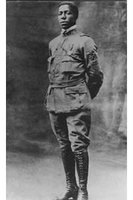 Resources:
Resources:
The New Georgia Encyclopedia's article on Eugene Bullard.
A tribute to Bullard on an Air Force site, with some great historical images.
Black Wings, from the National Air and Space Museum, places Bullard among other pioneering African American aviators.
Top left: Movie poster for "Flyboys."
Top right: Still from "Flyboys" showing the Eugene Bullard character played by Abdul Salis.
Bottom left: The real Eugene Bullard in his aviator uniform.
Bottom right: Book cover of Eugene Bullard: Black Expatriate in Jazz-Age Paris.
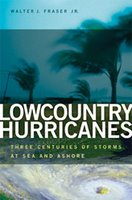 We're now in the heart of the 2006 hurricane season, which runs from June 1-November 30. Alberto, Beryl, Chris, Debby, Ernesto, and Florence have come and gone. Gordon and Helene are prowling the Atlantic. Thirteen more names are on reserve for storms yet to form.
We're now in the heart of the 2006 hurricane season, which runs from June 1-November 30. Alberto, Beryl, Chris, Debby, Ernesto, and Florence have come and gone. Gordon and Helene are prowling the Atlantic. Thirteen more names are on reserve for storms yet to form.
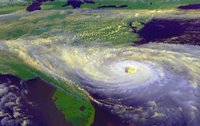
That's a snapshot of the current storm situation. For the long view, a good place to begin is LOWCOUNTRY HURRICANES, the brand new history of hurricanes and tropical storms along the Georgia-South Carolina seaboard. Walter J. Fraser Jr. covers more than eighty storms, from 1686 to recent times, telling how these awesome natural forces have affected people and altered the built and natural environment from St. Mary's, Georgia to Myrtle Beach, South Carolina.
History buffs will appreciate how Fraser uses firsthand accounts to tell his story. Weatherbugs can rest assured that he makes use of data accumulated by the National Oceanic and Atmospheric Administration/National Weather Service.
 Meet Walter J. Fraser Jr.:E. Shaver BooksellerSavannah, GA912-234-725
Meet Walter J. Fraser Jr.:E. Shaver BooksellerSavannah, GA912-234-725
Tues., Oct 3, 2006 at 3 p.m.Charleston County Public LibraryCharleston, SC843-805-6930
Thurs., Oct. 5, 2006 at 7 p.m.Georgetown County LibraryGeorgetown, SC843-545-3300Fri., Oct. 6, 2006 at 12:00 p.m.
Coastal Georgia Historical SocietySt. Simons, GA
912-638-4666Thurs., Oct. 19, 2006 at 7 p.m.Hurricane Resources:
NASA's hurricane site includes some beautiful hurricane images taken from the space station and a nicely done printable hurricane fact sheet.
Hurricane preparedness information is available for Georgia and South Carolina, the two states on which LOWCOUNTRY HURRICANES focuses.
 Perspective view of Hurricane Hugo on 21 September 1989 at 14:44 EDT by GOES-7 (Geostationary Operational Environmental Satellites), as the hurricane approaches Charleston, South Carolina. Image produced by F. Hasler, K. Palaniappan, M. Manyin, and H. Pierce (NASA/Goddard). Photo of Walter J. Fraser Jr. by Bob Neumann.Residents viewing the wreckage along Council Street in Charleston, 1893. Harper's Weekly, September 16, 1893, courtesy of Hargrett Rare Book and Manuscript Library, University of Georgia Libraries.
Perspective view of Hurricane Hugo on 21 September 1989 at 14:44 EDT by GOES-7 (Geostationary Operational Environmental Satellites), as the hurricane approaches Charleston, South Carolina. Image produced by F. Hasler, K. Palaniappan, M. Manyin, and H. Pierce (NASA/Goddard). Photo of Walter J. Fraser Jr. by Bob Neumann.Residents viewing the wreckage along Council Street in Charleston, 1893. Harper's Weekly, September 16, 1893, courtesy of Hargrett Rare Book and Manuscript Library, University of Georgia Libraries.
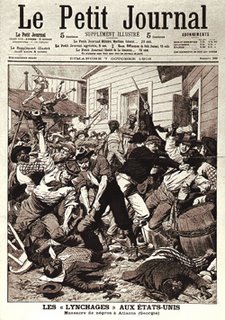 Until the Atlanta Race Riot of September 22-24, 1906, the city could still tout itself as a place where blacks and whites lived peacefully, yet separately. The Riot--which exposed a web of racial, economic, and class tensions--changed all that. The culminating events of the Riot's centennial remembrance will take place in Atlanta beginning September 21.
Until the Atlanta Race Riot of September 22-24, 1906, the city could still tout itself as a place where blacks and whites lived peacefully, yet separately. The Riot--which exposed a web of racial, economic, and class tensions--changed all that. The culminating events of the Riot's centennial remembrance will take place in Atlanta beginning September 21.
The University of Georgia Press has a number of books related to the Riot, its causes, its principal figures, and its important place in American history.
THE LAW OF THE WHITE CIRCLE
A novel by Thornwell Jacobs
Long out of print, this is the only fictional treatment of the Riot ever to be published. This edition includes supplemental readings that promote a deeper understanding of the novel and the actual events it portrays.
LIVING ATLANTA
An Oral History of the City, 1914-1948 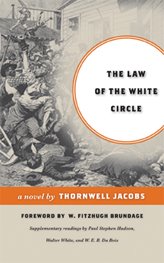
by Clifford M. Kuhn, Harlon E. Joye, and E. Bernard West
Clifford M. Kuhn is one of the principal organizers of the Riot's centennial remembrance. This book includes memories by Atlanta residents, black and white, of the Riot and its lasting effect on the city.
A MAN CALLED WHITE
The Autobiography of Walter White
by Walter White
Includes the author's eyewitness account of the Riot. White's views on race were changed forever by the experience, leading him to take leadership roles in the NAACP.
TO BUILD OUR LIVES TOGETHER
Community Formation in Black Atlanta, 1875-1906
by Allison Dorsey
Tells how black Atlantans pursued their dreams through a network of churches, fraternal organizations, and social clubs--and how these pursuits fueled white apprehensions that came to a head during the Atlanta Race Riot.

THE HERNDONS
An Atlanta Family
by Carole Merritt
The story of a leading black Atlanta family and its business empire. Owned by the Herndons, the Crystal Palace, Atlanta's most opulent barber salon, was ransacked during the Riot.
LUGENIA BURNS HOPE, BLACK SOUTHERN REFORMER
by Jacqueline Anne Rouse
The biography of a prominent black activist with close ties to Morehouse College and an acute understanding of the social forces that collided during the Riot. Resources:
Web site of the Coalition to Remember the Atlanta Race RiotArticle on the Atlanta Race Riot in the New Georgia Encyclopedia Recent coverage of the Riot centennial in the Washington Post
Atlanta Race Riot segment from the PBS documentary series The Rise and Fall of Jim Crow
Contact the Martin Luther King Jr. National Historic Site for information on the exhibit Red Was the MidnightAbove illustration of the Atlanta Race Riot from the October 7, 1906 cover of the French magazine Le Petit Journal
 The film "Flyboys," which opens nationwide today, has already generated some online discussions about its African American character (named Eugene Skinner and played by Abdul Salis). The discussions will often begin with a remark about how lame, PC, or just plain inaccurate it is to include a black guy in a movie about American combat pilots in WWI. Others will join in with remarks abo
The film "Flyboys," which opens nationwide today, has already generated some online discussions about its African American character (named Eugene Skinner and played by Abdul Salis). The discussions will often begin with a remark about how lame, PC, or just plain inaccurate it is to include a black guy in a movie about American combat pilots in WWI. Others will join in with remarks abo ut how the film takes too many historical liberties by including such a character.
ut how the film takes too many historical liberties by including such a character. y're trying to give Bullard his due in this movie. I think that's for the good." Abdul Salis, who plays the Bullard character in "Flyboys," read the biography while preparing for the part. The biography's film rights have been optioned; perhaps one day there will be a movie just about Bullard. In an interview with Salis, the actor muses on what it was like to play Bullard in "Flyboys," whether Bullard deserves his own film (yes), and whether he'd like to (re)play Bullard in it.
y're trying to give Bullard his due in this movie. I think that's for the good." Abdul Salis, who plays the Bullard character in "Flyboys," read the biography while preparing for the part. The biography's film rights have been optioned; perhaps one day there will be a movie just about Bullard. In an interview with Salis, the actor muses on what it was like to play Bullard in "Flyboys," whether Bullard deserves his own film (yes), and whether he'd like to (re)play Bullard in it. Resources:
Resources:






